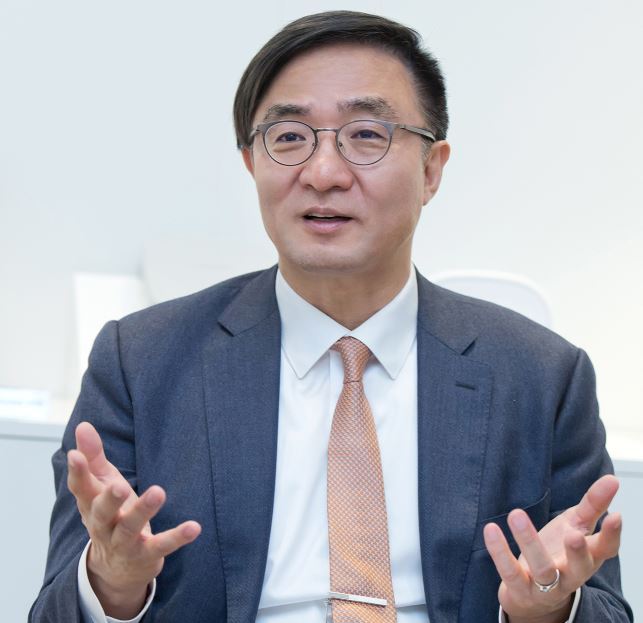BARCELONA, Spain -- Samsung Electronics will focus on the US to seek growth opportunities in the upcoming fifth-generation network market after its success in India with Long Term Evolution network equipment, said the chief of Samsung’s network business Tuesday.
“We are aggressively starting to enter the US market with Verizon,” said Kim Young-ki during a press conference at Mobile World Congress 2018 in Barcelona. “We provided some main equipment for 4G in the US in partnership with Verizon and are now entering the 5G fixed wireless access network market there.”
In January, US mobile carrier Verizon selected Samsung to supply commercial 5G FWA network solutions. The two companies will begin by launching commercial 5G services in Sacramento, California, in the second half of 2018.
“FWA using the 800-megahertz bandwidth is an important application in 5G, which is to be launched first among other equipment,” Kim said. “The FWA will commercialize broadband service in the US, increasing social value, and move forward digitalization.”
 |
Samsung Electronics’ network business President Kim Young-ki speaks during a press conference Tuesday. (Samsung Electronics) |
The president showed confidence in the new 5G market coming up in 2019 at the earliest, which could be a golden opportunity for Samsung to expand its global market share.
Kim vowed to increase its share up to 20 percent in 5G equipment.
Compared to global players like Nokia, Ericsson and Huawei, Samsung moved too slowly in the fourth-generation era due to insufficient investment.
Kim said by the time India goes from 4G to 5G, Samsung’s global market share could double or triple.
“India is a very hot LTE market right now,” he said. “Multiple vendors including Samsung established more than 100,000 LTE base stations across the country, and more than 100 million people subscribed to LTE services last year.”
On the first day of the MWC, Reliance Jio Infocomm and Samsung announced their continued partnership to bring LTE coverage to 99 percent of the Indian population and significantly improve network capacity across the country.
Indians use 10 gigabytes of data per person annually, far more data than 5 GB to 7 GB by Koreans and Japanese.
In response to a question about competition with Huawei, Kim said credit is the most crucial thing in the telecommunications infrastructure business.
“Consumers can experience products like smartphones before buying them, but can’t try any service before a new network is established,” he said. “Selecting a vendor requires mutual trust between the vender and operator.”
It takes five to 10 years to become a trusted vendor in another country, he said. “Good technology, products and credit will provide value for operators.”
Since 5G utilizes 800-megahertz bandwidth and 28-gigahertz and 3.5 GHz frequency bands, Samsung, which has special technologies for 28 GHz, could offer special value to US operators, he said.
“I think 28 GHz is important … we started developing the technology as the first in the industry.”
“Telecom technology for 28 Ghz is more difficult than others due to the frequency’s natural weakness. We have commercialized such difficult technology,” Kim added.
The company has technologies for 3.5 GHz, too.
When 5G is commercialized based on Samsung’s network infrastructure, consumers will be able to take advantage of the tech giant’s big data created from communication between connected cars and artificial intelligence machines, he said.
“Samsung is in a position that can provide the most useful 5G services when the network is ready,” Kim said.
By Song Su-hyun (
song@heraldcorp.com)








![[Today’s K-pop] Blackpink’s Jennie, Lisa invited to Coachella as solo acts](http://res.heraldm.com/phpwas/restmb_idxmake.php?idx=644&simg=/content/image/2024/11/21/20241121050099_0.jpg)